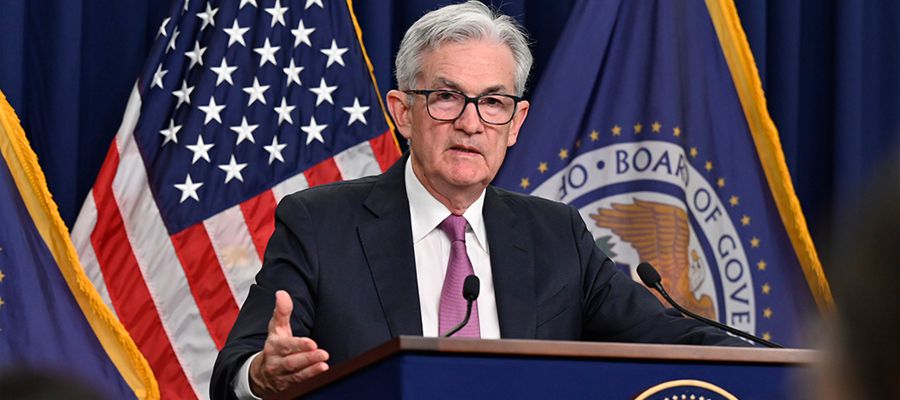Central banks have not yet reached the point of pivot but it is getting closer and markets are feeling it.
- Wednesday, November 2, 2022
 Central banks are approaching the point of maximum danger as they attempt to both curb inflation without tipping economies into a painful recession.
Central banks are approaching the point of maximum danger as they attempt to both curb inflation without tipping economies into a painful recession.
With UK inflation at 10.1% and eurozone at 10.7%, central banks are expected to react to this through higher interest rate, but there are growing signs of economic contraction, credit demand is falling and savings rates improving showing that business and households are tightening their belts.
Interest rate announcements are expected from both the BoE and the Federal Reserve this week and their announcements will give us some indication over policy position between countering inflation and protecting the economy. Both are expected to hike by 0.75% just as the ECB did recently.
Having taken far too long to appreciate that inflation was far more than ‘transitory’ both the BoE and the Fed have prioritised getting prices under control. The Fed has done more than most with rate rises of 0.75% at each of the last three FOMC meetings. This has been an aggressive tightening exercise but one that the USA could manage. The Fed has been bold in countering inflation because the US economy is in good shape.
The US unemployment rate fell to 3.5% in September 2022, matching July’s 29-month low and remaining below market expectations of 3.7%, in another sign overall labour market conditions in the world’s largest economy remain tight.
The annual inflation rate in the US slowed for the third month running to 8.2% in September of 2022, the lowest in seven months, compared to 8.3% in August but above market forecasts of 8.1%. However, the core rate which excludes volatile food and energy, rose to 6.6%, the highest since August of 1982, and above market expectations of 6.5% in a sign that inflationary pressures remain elevated.
The BoE and ECB have been far more cautious in their approach to rate hikes. The ECB must respond to differing priorities from its member states.
Some G7 central banks are becoming more sensitive to over tightening and have started to rein in on rate hikes, even the hawkish Fed is starting to talk about reducing the pace and size of future rate rises and to assess the impact of policy changes prior to another step.
In the UK, Ben Broadbent the BoE Deputy Governor has suggested that UK interest rates may not rise as high as analysts are expecting given the damage high interest will do to mortgage holders and the wider economy. This has been interpreted that the BoE are increasingly concerned that high rates will deepen a recession and cause a crisis in the housing market.
UK base rates are currently 2.25% and expected to rise to 0.75% on Thursday. Markets are predicting a peak between 4.5% and 5% by June. Previously markets had predicted a peak interest rate of 5.25% in order to control inflation. The BoE own modelling suggests a rate of 5.25% will reduce GDP by 5% which is considered overly severe. Goldman Sachs are predicting UK CPI inflation will hit 11.9% by next April.
While the UK has mainly recovered from its currency and gilt yield spike, there have been other countries that have endured financial pressure. These stresses are fundamentally emulating from liquidity in the US treasuries market. The Fed has moved from a policy of loose money which has fuelled inflation to one of monetary tightening. All Central banks are collectively draining liquidity from the international system as they withdraw monetary support. It is this squeeze on capital that is making currency and credit markets sensitive.
Monetary contraction in the US is now at a concerning rate. The Fed is removing US$1.1tn of cash from the economy and commentators are feeling that this is over doing it and creating recession. Fortunately, the Fed has seen this danger and is talking of reducing the pace and size of quantitative tightening. The actions of the Fed over the next four months will be significant to the future of stable money. What will prompt an ease in tightening is a fall in core inflation and a rise in US unemployment. US 10-year Treasury yields have come down from 4.33% last month to 4.03% in early November.
The easing of US Treasury yields has also coincided with the US$ slipping in value against other major currencies giving some prospect of the easing of global financial conditions. Markets feel rate rises will be less than expected in the US so have revalued the dollar accordingly. An overly strong US$ brings inflation and capital imbalance to the rest of the world economy. Any sign of the transatlantic mis-balance narrowing is a good sign.
Central banks have not yet reached the point of pivot but it is getting closer and markets are feeling it.

Chris Davies
Chartered Financial AdviserChris is a Chartered Independent Financial Adviser and leads the investment team.
About Estate Capital
Financial Services
Our Contacts
7 Uplands Crescent,
Swansea, South Wales,
SA2 0PA.
Tel: 01792 477763
